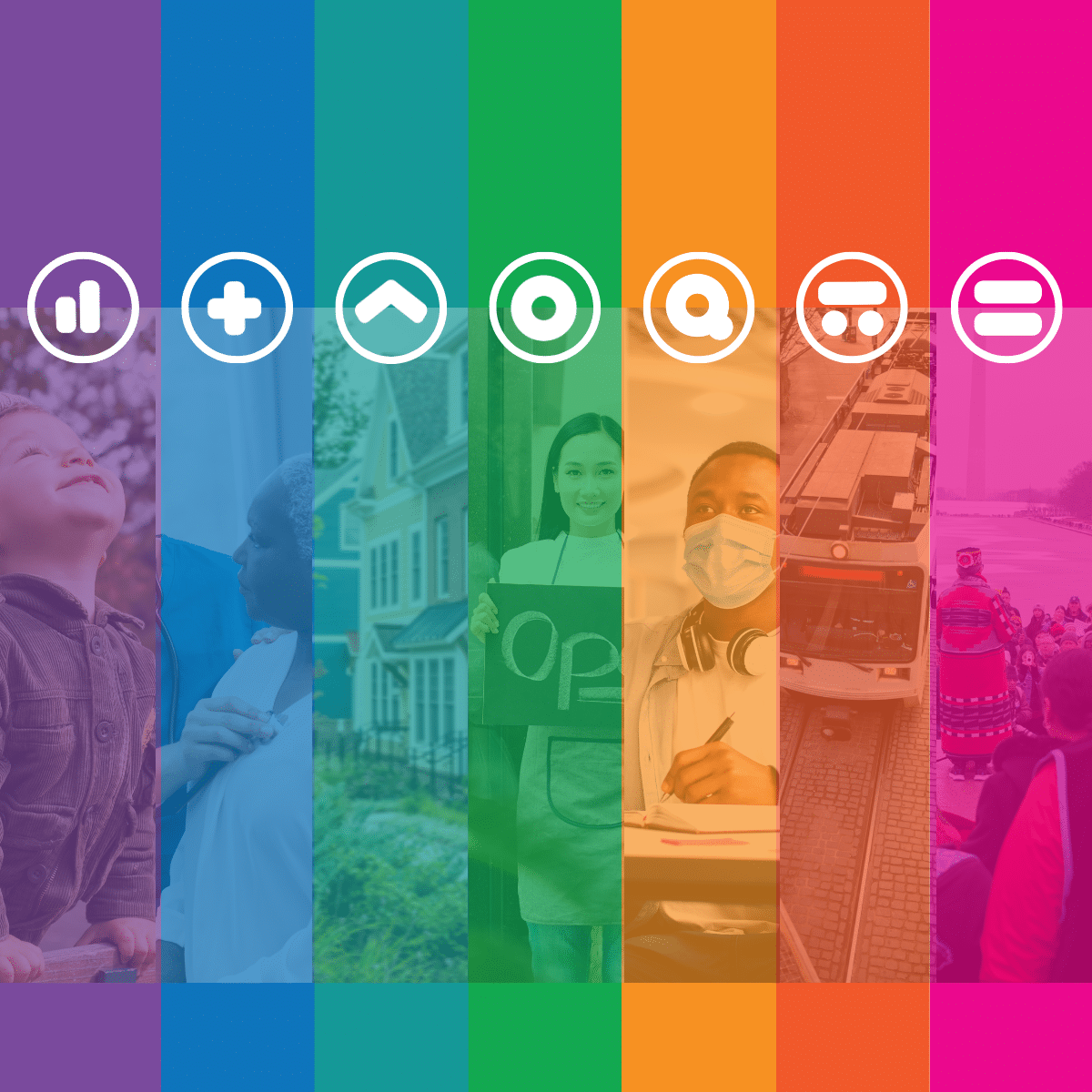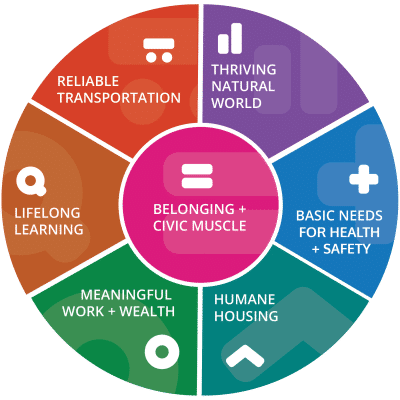Vital Community Conditions
The communities where people live, work, and play greatly influence health. Vital community conditions are properties of places and institutions that all people need all the time to be healthy and well. In order to thrive, people need access to a consistent, complete set of vital conditions, such as clean air, fair pay, humane housing, early education, and other necessities. These vital community conditions form an interdependent system that shapes the choices, opportunities, and challenges people encounter throughout their lives.

Seven Vital Conditions for Community Health and Well-Being
Public Health plays an essential role in improving vital community conditions. Public Health helps prevent and mitigate health hazards, increases access to basic needs and services, implements policies, plans, and programs to improve health, and strengthens and supports partnerships across sectors for health.
The Seven Vital Conditions for Community Health and Well-Being is a framework for understanding well-being and the conditions that give rise to it. The framework is organized into seven “vital conditions” or domains that bring together major determinants of health and expose how parts of a multi-faceted whole work as a system to produce population well-being.

Urgent Services
While vital conditions are necessary to achieve health and well-being, there are moments when people experience crisis. Urgent services, like food or unemployment assistance, are necessary to relieve short-term suffering, but these bandaid efforts to aid in crisis are inadequate to address persistent, entrenched inequity and improve well-being at scale. We can transform our systems for well-being by shifting focus from “urgent response” to intentionally investing in vital community conditions that prevent illness and injury, promote prevention, and foster well-being.
Reflection Questions
- How would you describe the relationship between vital community conditions and urgent services in advancing health, well-being, and equity?
- What examples of building belonging and civic muscle have you seen in your community?
- Where do you see opportunities for Public Health to advance strategies that address two or more vital conditions at the same time (i.e., multisolving)?
